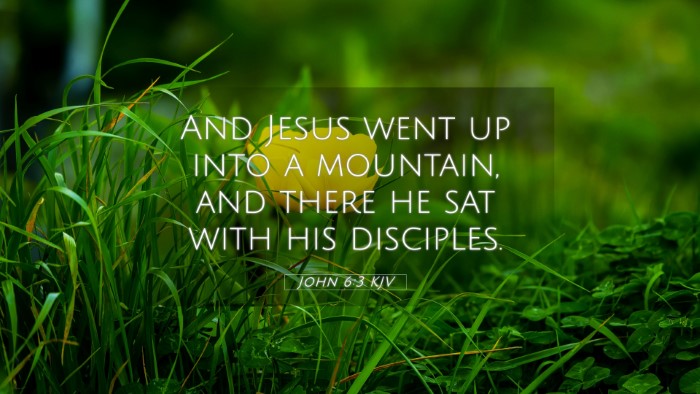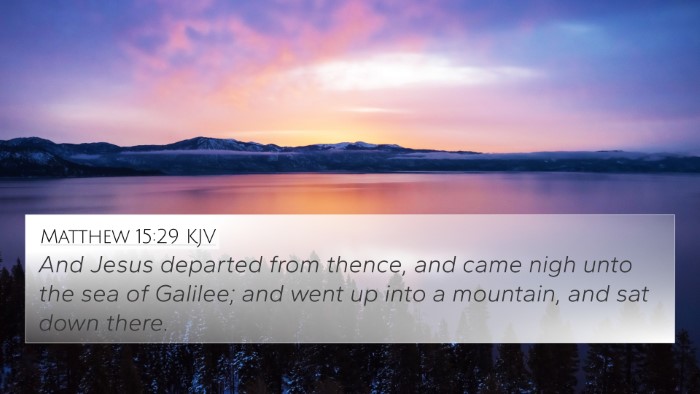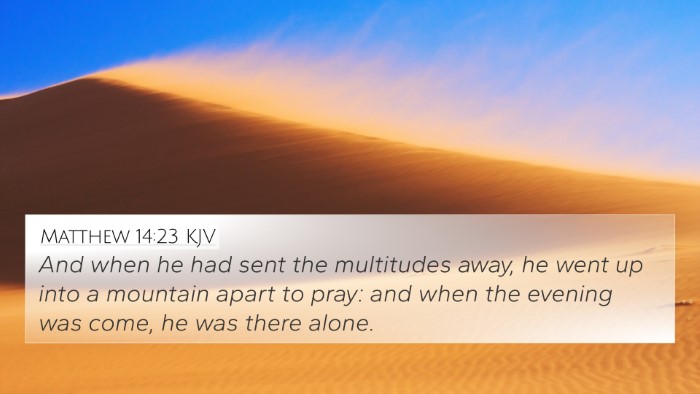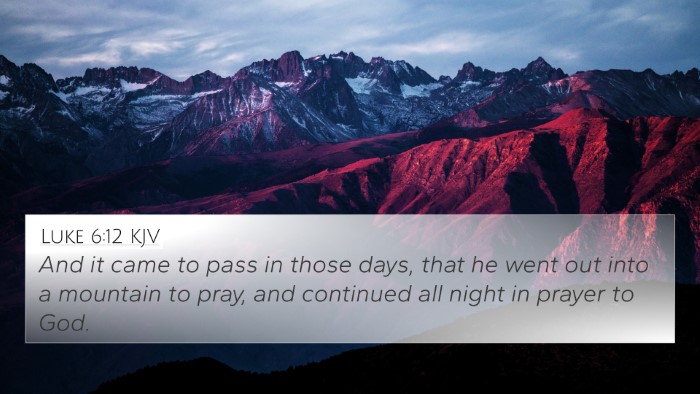Understanding John 6:3
The verse John 6:3 states:
"And Jesus went up into a mountain, and there he sat with his disciples."
Summary of the Verse
In this verse, we observe Jesus' intentional act of retreating to a mountain, a common setting for significant spiritual teaching and revelation. This action signifies a moment of preparation and communion with his disciples away from the press of the crowds.
Commentary Insights
-
Matthew Henry: Henry emphasizes the importance of this withdrawal, suggesting that Jesus sought a private setting to instruct his disciples. The mountains often serve as a place for divine encounters, paralleling Old Testament encounters such as those with Moses and Elijah.
-
Albert Barnes: Barnes notes that this setting reveals Jesus' method of teaching, indicating that He often took His disciples to secluded places for deeper instruction. The geographical shift to the mountain also symbolizes a higher understanding of spiritual matters, inviting the disciples to elevating thoughts.
-
Adam Clarke: Clarke highlights that the act of sitting down before teaching reflects the Jewish custom of the rabbi sitting to teach. This presents Jesus as a Rabbi who is about to impart significant spiritual truths, drawing the disciples into an intimate learning environment.
Bible Cross-References
This verse is interconnected with several other biblical texts that enrich its meaning:
- Matthew 5:1: "And seeing the multitudes, he went up into a mountain: and when he was set, his disciples came unto him." – This verse describes Jesus' similar act of ascending a mountain to teach, emphasizing his role as a teacher.
- Mark 3:13: "And he goeth up into a mountain, and calleth unto him whom he would: and they came unto him." – Here, Jesus calls his disciples to Him, signifying a moment of selection and formation.
- Luke 6:12-13: "And it came to pass in those days, that he went out into a mountain to pray, and continued all night in prayer to God. And when it was day, he called unto him his disciples: and of them he chose twelve." – This highlights the importance of prayer in preparation for his ministry and the choice of his apostles.
- Exodus 19:20: "And the LORD came down upon mount Sinai, on the top of the mount: and the LORD called Moses up to the top of the mount; and Moses went up." – This verse provides an Old Testament parallel, highlighting the significance of mountains as places of divine encounter.
- Philippians 4:9: "Those things, which ye have both learned, and received, and heard, and seen in me, do: and the God of peace shall be with you." – Paul refers to the teachings learned and received, aligning with the intimate learning environment Jesus provides in John 6:3.
- Matthew 14:23: "And when he had sent the multitudes away, he went up into a mountain apart to pray: and when the evening was come, he was there alone." – This illustrates a common theme of Jesus retreating to solitary spaces for prayer and teaching.
- Psalm 121:1-2: "I will lift up mine eyes unto the hills, from whence cometh my help. My help cometh from the LORD, which made heaven and earth." – This verse reflects the spiritual significance of mountains as places where help and revelation are sought.
- Hebrews 12:22: "But ye are come unto mount Sion, and unto the city of the living God, the heavenly Jerusalem..." – This connects the physical mountain with the spiritual reality of approaching God.
- Isaiah 40:9: "O Zion, that bringest good tidings, get thee up into the high mountain..." – A call to proclaim good news from a high place, reflecting the significance of the mountain setting in Jesus' ministry.
Connecting Themes
This verse highlights several themes present throughout the Bible:
-
Divine Instruction: The practice of teaching in a secluded, elevated place emphasizes the importance of divine instruction away from distractions, a theme present in both the Old and New Testaments.
-
Preparation and Prayer: The act of withdrawing for prayer and teaching signifies preparation for significant ministry and decisions, as seen in the calling of the apostles.
-
Close Discipleship: Jesus’ intentional choice to sit with His disciples speaks to the importance of close mentorship and relationship in spiritual growth.
-
Symbolism of Mountains: Mountains throughout Scripture symbolize a place for divine encounter, safety, and a place for revelation.
Conclusion
John 6:3 serves as a pivotal moment where Jesus transitions from public ministry to an intimate teaching session with His disciples, encapsulating themes of divine instruction, preparation, and the significance of spiritual retreats. The cross-references presented enrich our understanding of this verse and connect it with broader biblical themes that emphasize the relationship between God and His people.
Further Study
For those studying this verse, consider utilizing tools such as a Bible concordance or a cross-reference Bible study guide. These resources can aid significantly in exploring connections between Bible verses, enhancing the understanding of scriptural themes and teachings throughout both the Old and New Testaments.







